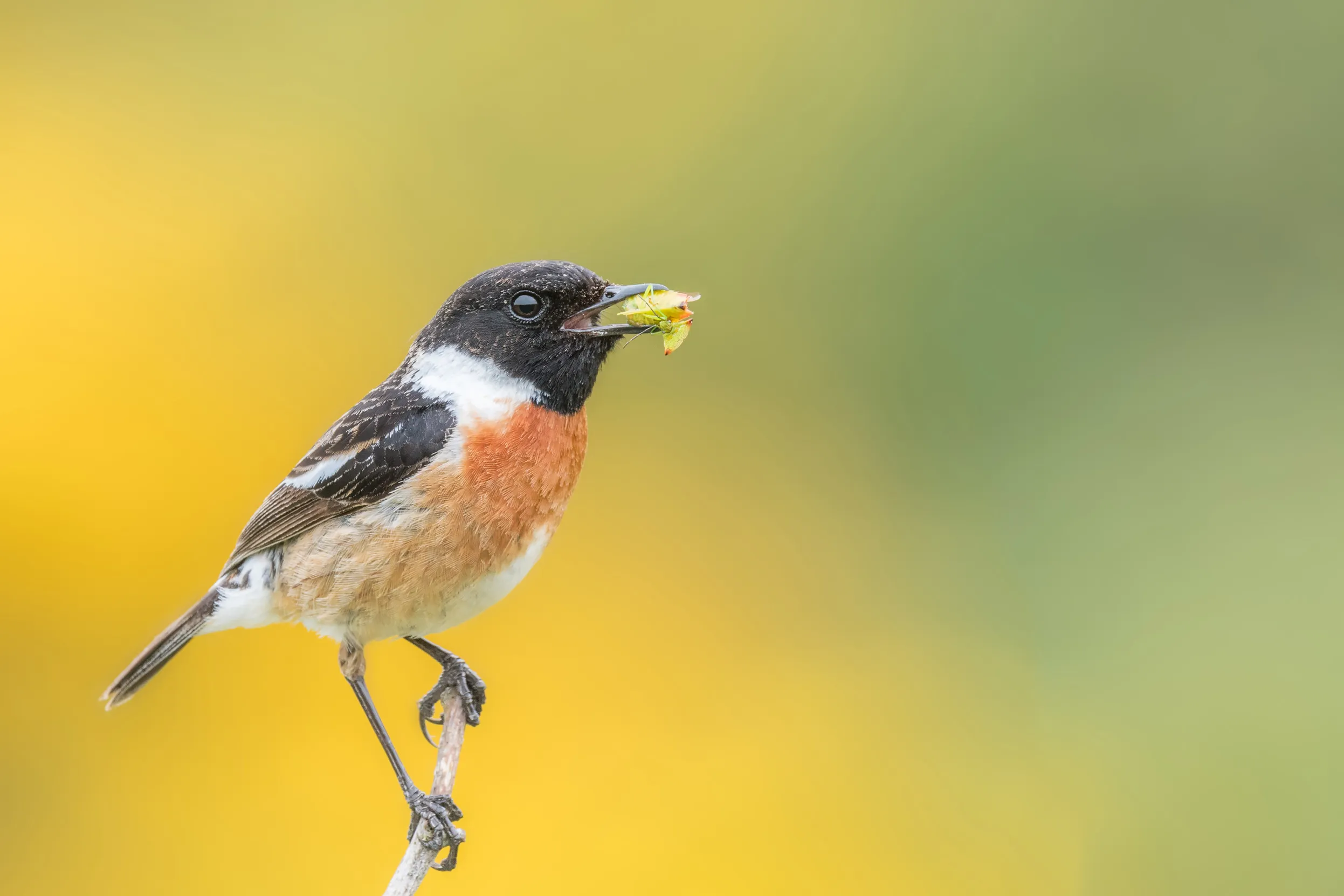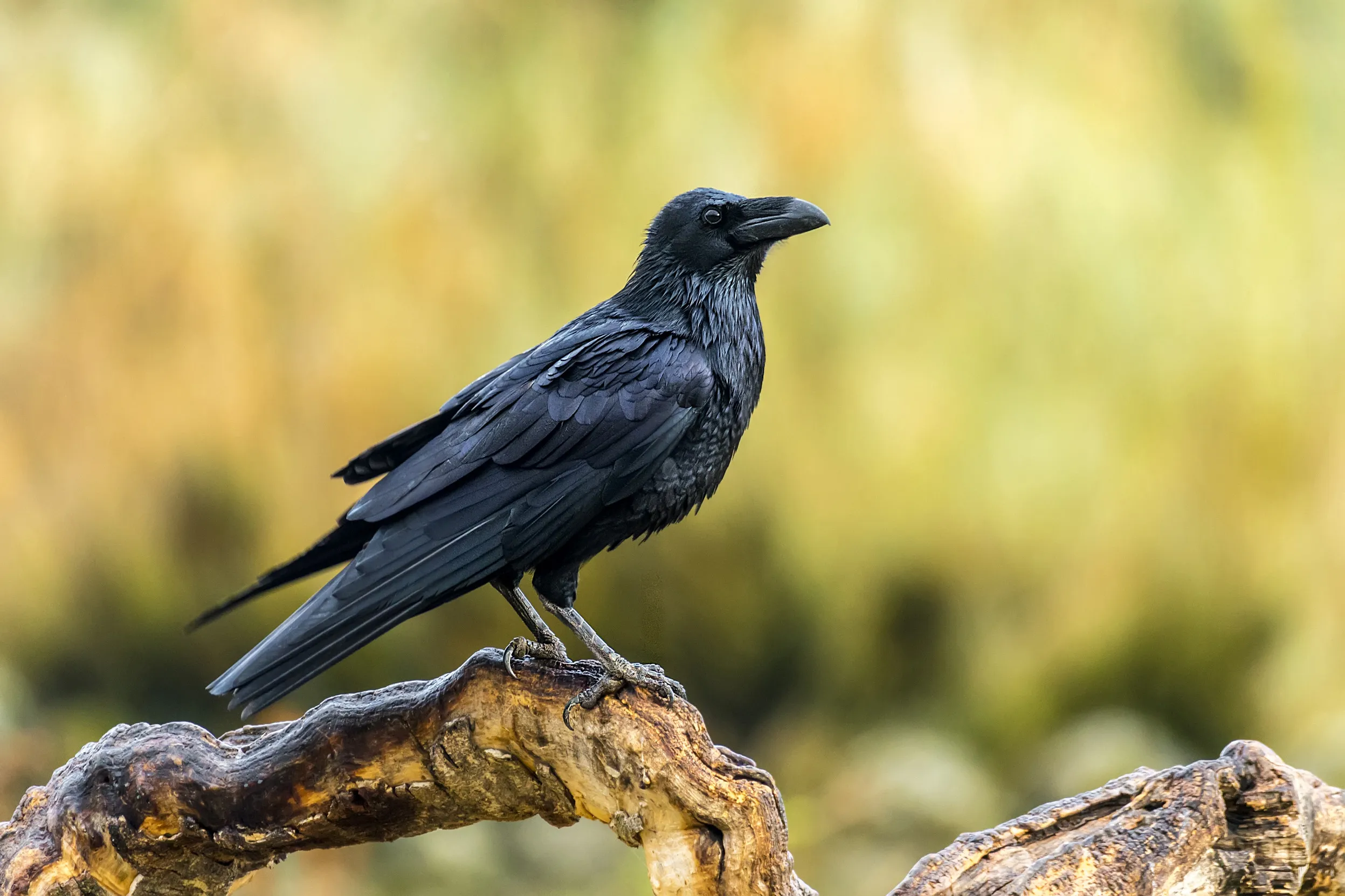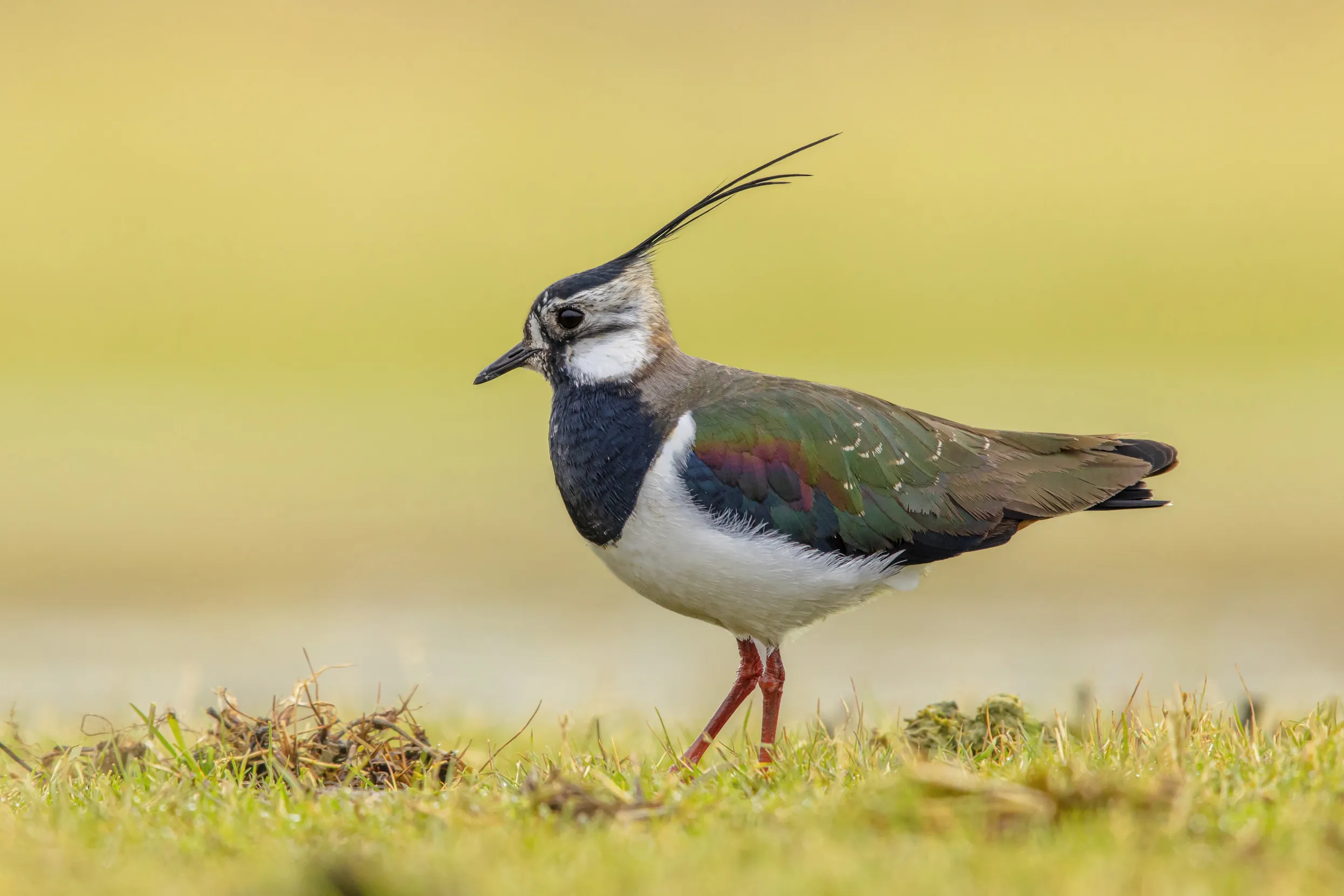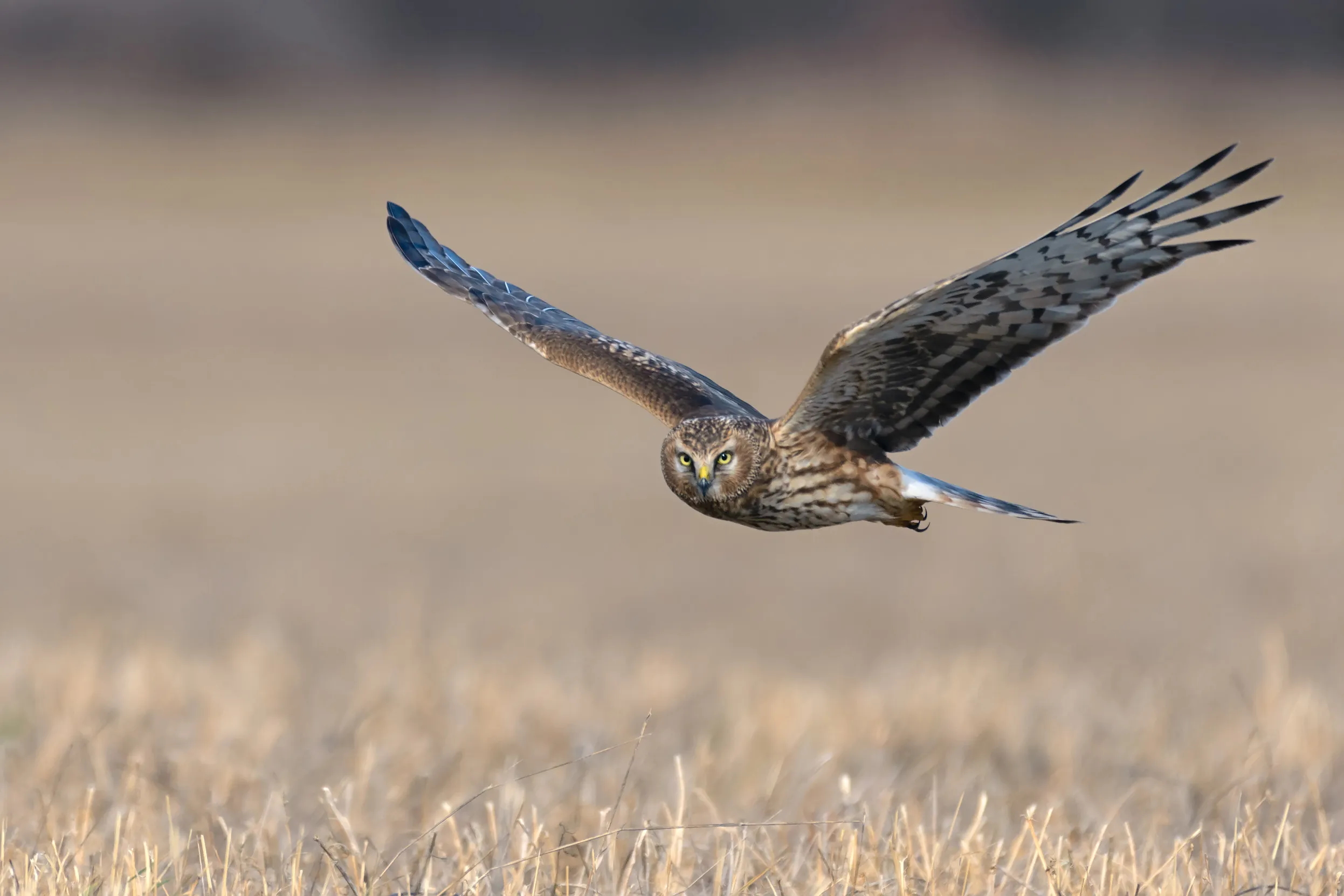
Sounds of... Uplands
The Sounds of Uplands is your guide to the songs, shrieks, squawks and shrills which serenade us as we walk over high hills, fells, mountains and moors.

On this page
These are the places which reverberate with the croaky call of Ravens, the haunting cry of Curlews and the amused chuckle of Red Grouse.
Of course, many of our more common birds also live on heathlands, and you can hear their songs in the Sounds Of… Parks and Gardens and Sounds of Parks and Gardens - Tits and Finches.
Stonechat
The male Stonechat looks like a Robin in a balaclava, with a bright orange chest offset by a black head and a white collar. The female is browner, with a more subtle orange breast.

Meadow Pipit
The Meadow Pipit may be the most common songbird in heathland areas, but it doesn’t like you to think so. Its brown coat and streaked underbelly make it hard to spot as it creeps along in the undergrowth. Very similar to the rarer Tree Pipit.

Raven
The Raven is a massive black crow that is bigger than a buzzard. They have a big black beak and fancy throat feathers called hackles, which can look like a feathery beard when displayed. More often found in the west of the UK, although they’re increasing their range eastwards.

If a dog was a bird it would sound like this. It’s a big low bellow of a call, like the sort of gravely croak we think a canine would make if it had a beak.
Whinchat
The Whinchat looks like the Stonechat’s summer sidekick, slimmer in size and with paler plumage. The most obvious difference to the Stonechat is the white stripe above the Whinchat’s eye, which can be seen on the male and the even paler female.

Keeps it punchy and to the point, singing three or four short phrases, which last a couple of seconds before taking a short breather. The phrases themselves can be all sorts of sounds – whistles, trills, shrills and the odd bit of mimicry to throw you off guard.
Curlew
The Curlew is Europe’s largest wading bird, which in summer heads to our uplands to breed. Imagine a female Pheasant, but with long blue legs and a brilliant long beak which curves downwards.
The call of a Curlew is a call of the wild. Its haunting cries bubble and boil, wibble and wail, sometimes sounding like they’re calling their name “cur-lee, cur-lee”.
Snipe
The Snipe is another wader that heads to the hills to breed. Smaller than a Curlew, with much shorter yellow legs and a straight long beak.

The Snipe makes its own musical rules. Why sing, when you can make the most amazing noise by vibrating your tail feathers as you fly? The result is a most peculiar sound not of this earth, like a Scooby Doo ghost, or something off an early series of Doctor Who.
Lapwing
The Lapwing looks like a futuristic bird drawn in the 80s: their crest a beeping antenna, their feathers a shimmering cape of purple and green. From a distance and in flight they look black and white. In spring, the male performs steep dives and tight-angled turns to impress the females.

Like something straight out of The Clangers. Lapwings are masters of the slide whistle, going up and down the musical scale with a sense of joy, abandon, mischief and alarm, sometimes all at the same time.
Red Grouse
The Red Grouse is a medium-sized game bird that lives life in the heather. Its rusty red plumage keeps it well hidden until you get too close, when it will break cover and make you jump a mile. If you do see one, take a moment to admire their bright red eyebrows.

Sounds like a jolly sort of fellow, who likes a belly laugh. Often starts with a cautious “ha” before he gives in to a full on “hahahahahaha”. Usually beat their wings at the same time for dramatic effect.
Wheatear
The male Wheatear in particular is a striking bird, with a pale orange chest and black and white eye stripes, a bit like a feathery bandit. The female is browner and decided the bandit mask wasn’t for her. Both have a prominent white behind, which they proudly show off in flight.

Starts with a percussive, gravelly intro to set the scene before hitting the high notes with a quick burst of fluid notes. Has a quick break before performing something similar.
Grasshopper Warbler
The Grasshopper Warbler is a small brown bird that makes an epic journey from Africa to be here every summer. It moves like a mouse through cover and would remain pretty anonymous if it wasn’t for their song…
A continuous tirade of fast flowing notes, which could easily be mistaken for a loud grasshopper. Bobs his head as he sings, to ensure even then they are hard to spot.
Ring Ouzel
We don’t know if the Ring Ouzel is religious or just likes dressing up as a vicar. The male makes a point of going for an all-black outfit with a bright white collar. The female is browner, but many still opt for the white neck ring from which they get their name.

A bit like the “ring ring” of a melancholic telephone echoing out over the moorlands, with no-one really rushing to answer.
If you're lucky you might hear...
Black Grouse
The male Black Grouse is a big buff bird dressed in black. They have an impressive red eyebrow and white undertail, which they fan when strutting their stuff on the dancefloor, or lek as it is known. The females are smaller and brown to help them remain hidden on their nests. Best seen in the uplands of Wales, the Pennines and across Scotland.
Usually the silent type, but likes to sing when he dances. Delivers a wibbly wobbly wail, pulsating up and then down a scale as he fans his impressive tail.
Merlin
The Merlin may be our smallest falcon, but they can move, dashing and darting over open moors to catch unassuming birds. They have short broad wings and a shorter tail than a Kestrel. Males are mainly grey, with the larger female brown.

A repetitive squawk that gets faster and faster, like they’re commentating on a horse race.
Hen Harrier
The male Hen Harrier is the silver-grey skydancer, his wing tips dipped in black. This rare bird performs his acrobatics to impress females in early spring. The female is larger and brown, with rings around her tail. Despite the name, they mainly eat Meadow Pipits and voles.

Usually lets his moves do the talking, but occasionally adds an odd “yik yik yik” chattering call when needed.